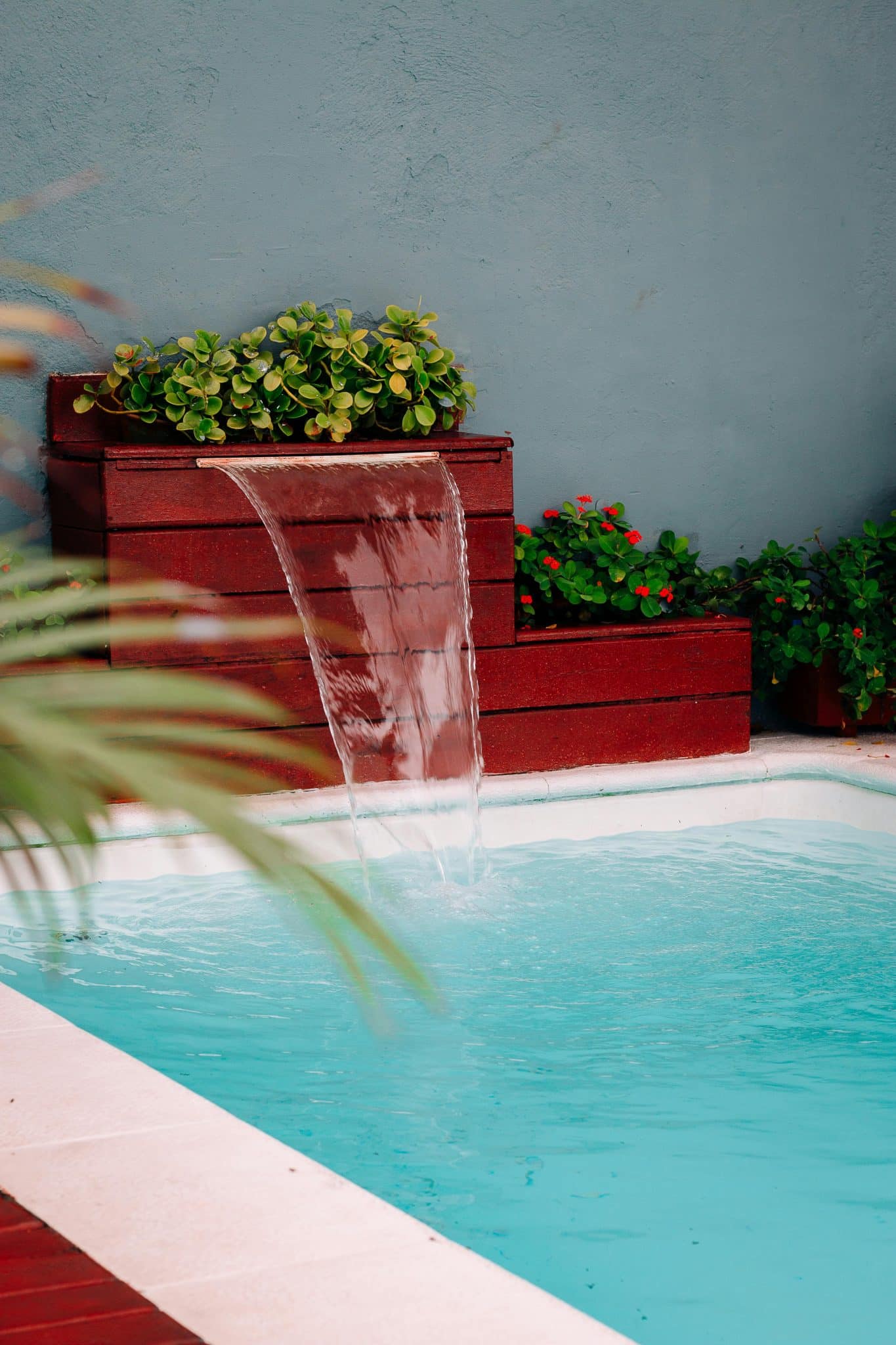Determining the ideal moment when to open pool in ontario requires careful consideration of local climate patterns and personal readiness for maintenance. As temperatures consistently rise above freezing, typically occurring from mid-May through June, pool owners should assess weather forecasts and prepare their equipment. Swift action during this period ensures a seamless transition into the summer swim season, avoiding common pitfalls associated with delayed openings like algae growth or necessary repairs due to lingering winter damage.
Best Time to Open Your Pool in Ontario
The ideal time frame when to open pool in ontario is a balance between the weather and practical maintenance considerations. As temperatures begin to rise consistently above 10°C, usually around late April or early May, it’s a good signal to start preparations for the landscaping project as well. Opening your pool before the full onset of summer has several benefits:
- Firstly, algae growth is less aggressive in cooler waters. This makes initial cleaning more manageable and reduces chemical usage;
- Secondly, equipment checks can be done without rush, ensuring everything from pumps to filters operates smoothly;
- Lastly, you avoid the spring rush when service professionals are in high demand.
However, opening too early could lead to extra heating costs if you intend on swimming right away or challenges with unexpected frosts that may damage equipment. On the flip side, waiting too long into June risks hotter temperatures, which promote algae blooms and require more intensive labor and chemicals for cleanup.
Here are key points to consider:
- Monitor consistent daily highs above 10°C;
- Aim for late April or early May;
- Avoid potential frost by watching local forecasts;
- Schedule ahead of service provider peak times.
Late openings come with their own set of issues, such as increased difficulty in balancing water chemistry and potential damage from winter debris sitting too long. It’s also worth noting that an uncovered pool warms up faster due to direct sunlight exposure but requires regular skimming of fallen leaves and debris.
Preparing Your Pool for the Swim Season
Damage Assessment
After winter, inspect your pool closely. Look for spring leaks or damage to the structure. Check the lining, ladders, and diving boards.
Repair any issues before filling the pool. This prevents costly water loss and ensures swimmer safety.
System Checks
Examine all hoses, filters, and pumps. Replace worn parts as needed. Ensure clamps are tight to prevent leaks when operating.
Backwashing may be necessary to clean out debris accumulated over winter.
Water Quality
Test water balance using a kit after refilling your pool. Adjust pH levels and add chlorine as required.
Cleanliness is crucial for safe swimming conditions.
Dealing with Pollen and Algae during Pool Opening
Common Issues
Pollen and algae are persistent problems when opening pools. These issues can turn the water green, making it unpleasant for swimming. Pollen clings to pool surfaces, while algae thrive in warm, stagnant water.
Regular skimming is essential to combat pollen. A cartridge filter also proves effective at trapping fine particles like pollen. For algae growth, prevention is vital. Maintaining proper chlorine levels prevents algae from taking hold.
Prevention Tactics
Preventing these nuisances begins with a clean pool environment. Remove leaves and debris promptly to discourage algae formation.
Using a quality cover during off-season months helps keep out unwanted materials that contribute to these issues. Investing in a good-quality pump ensures circulation that deters stagnant conditions favorable for algae.
Extending Your Pool Season with Off-Season Parties
Party Ideas
Off-season pool parties can transform your backyard into a year-round retreat. Consider themed gatherings that match the cooler weather. A “Polar Bear Plunge” for the brave at heart or a cozy “Hot Cocoa and Swim” event can offer unique experiences beyond summer days.
Hosting these events requires creativity. Light up the pool area with lanterns or string lights for ambiance. Offer guests warm towels and heated seating options to combat chilly evenings. These touches ensure comfort and extend your pool season, making every weekend feel like a mini-vacation.
Safety Measures
Safety is paramount when hosting off-season parties. Ensure interlocking walkways are well-lit to prevent accidents, as daylight hours may be shorter during this time of year. Investing in a pool cover helps maintain water temperature and prevents debris from entering the pool, which was likely an issue dealt with during pollen season.
Always have someone on hand who knows CPR, significantly since emergency response times might increase if roads are icy or snowy. Communicate clear rules about swimming in colder temperatures to avoid any health risks associated with cold shock or hypothermia.
Comfort Tips
Keeping your pool appealing in cooler months is all about warmth and atmosphere. Install heaters around your interlocking patio area so guests can transition comfortably between dips in the water and socializing outside.
Adding features like hot tubs adjacent to your main pool can also entice people to enjoy your backyard despite dropping temperatures. Encourage use throughout these months by maintaining regular cleaning schedules; nobody wants their weekend ruined by an uninviting pool space.
Efficient Pool Maintenance After Winter
Regular Cleaning
Regular cleaning is crucial for pool upkeep. Debris and leaves can accumulate over the winter months, potentially causing damage to your pool’s surface and filtration system. Start by carefully removing any cover used during the off-season, ensuring that no accumulated water or debris falls into the pool. Next, skim the surface of your pool to remove floating debris.
Perform a thorough brushing of walls and floor to prevent algae growth and remove dirt buildup. This step is essential in maintaining a clean environment for swimmers once you open your pool.
Chemical Balance
Achieving proper chemical balance in your pool water is vital after winter. Test pH levels, chlorine content, alkalinity, and calcium hardness before allowing anyone to swim. Adjust these levels as necessary to ensure safe swimming conditions.
Maintaining balanced chemicals will also protect your pool equipment from corrosion or scale buildup. It’s beneficial to shock the pool at this stage temporarily – a process that involves adding enormous amounts of chlorine – to eliminate bacteria and other contaminants.
Equipment Checks
Inspect all equipment, including pumps, filters, heaters, and backwash hoses, for signs of wear or damage caused by freezing temperatures during winter closure.
Ensure hoses are intact with no cracks; replace them if needed before starting up the system again. Check filter media—if it’s time for replacement, do so promptly—and perform a backwash procedure if applicable.
Energy and Cost Considerations for Pool Owners
Energy Management
Managing energy consumption is crucial for pool owners. Pools require significant energy, mainly through heating and filtration systems. To address this effectively, consider the timing of your pool operations. Use heaters during off-peak hours to save on electricity costs. Also, investing in a pool cover can reduce heat loss.
Energy-efficient equipment plays a vital role here. Upgrading to an energy-saving pump or a solar heater cuts down on long-term expenses. Remember that proper insulation and maintenance after winter are essential.
Cost Strategies
Cost-effective strategies are essential for maintaining your pool without breaking the bank. Regular cleaning reduces the need for chemicals and prolongs equipment life. Balancing chemicals properly prevents costly damage to liners and systems.
Implementing cost-saving measures doesn’t mean compromising on quality or enjoyment of your pool:
- Schedule regular maintenance checks;
- Invest in automated cleaners;
- Optimize chemical use with accurate testing kits.
These steps help maintain optimal conditions while keeping expenses low.
Summary
Determining the optimal time when to open pool in ontario hinges on various factors, including weather patterns, personal preferences, and maintenance considerations. By preparing your pool for the swim season, addressing potential issues like pollen and algae, and considering energy and cost efficiencies, you can ensure a smooth transition into enjoyable poolside leisure. Pool owners need to recognize that efficient pre-winter pool maintenance and post-winter maintenance are crucial for extending the life of their pool and enhancing the swim season experience.For those eager to dive into crystal-clear waters at the earliest opportunity, remember that timing is critical. Take proactive steps by scheduling your pool opening in alignment with Ontario’s seasonal changes and your readiness to embrace the joys of swimming. Should you require further guidance or services, do not hesitate to reach out to us at Avanti Landscaping, your local pool professionals who can assist in optimizing your pool’s performance for the upcoming season.

